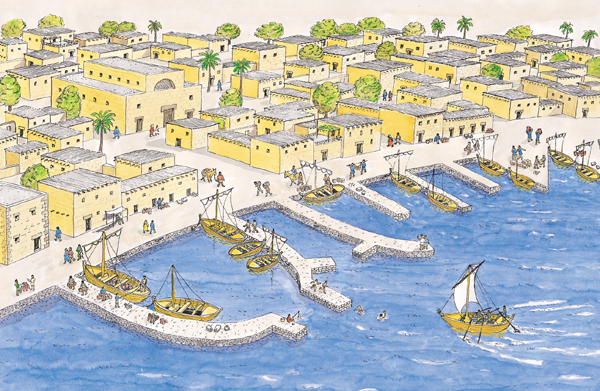Peter in Capernaum
Sidebar to: Peter: How a Flawed Disciple Became Jesus’ Successor on Earth

Peter was living and working in Capernaum, a small fishing village on the northwest shore of the Sea of Galilee, when Jesus called him to become a “fisher of human beings” (Mark 1:17). The busy first-century harbor town, shown in the reconstruction drawing, was one of the largest and most prosperous of the dozen ancient harbors that were discovered around the Sea of Galilee during a severe drought in the mid-1980s.a
At Capernaum, an 8-foot-tall seawall supported a 2,500-foot-long promenade. A series of straight, curved and wedge-shaped piers protected moored boats from the most dangerous winds on the lake. (Even today the Sea of Galilee—or the Kinneret, as the freshwater lake is known in Hebrew—is subject to sudden storms like the squall that nearly thwarted Jesus’ boat crossing from Capernaum to the opposite shore [Mark 4:37].)
The drought in the mid-1980s also led to the discovery of a 26.5-foot, first-century fishing boat, popularly called the “Jesus boat,” although there’s no evidence Jesus or his disciples ever sailed in it. The intact hull was found buried in mud about 5 miles south of Capernaum, near the town of Magdala (home of Mary Magdalene). The boat has since been conserved and preserved and is now on display at the Yigal Allon Center at Kibbutz Ginnosar, also on the west coast of the Galilee.
Already a library member? Log in here.
Institution user? Log in with your IP address.

